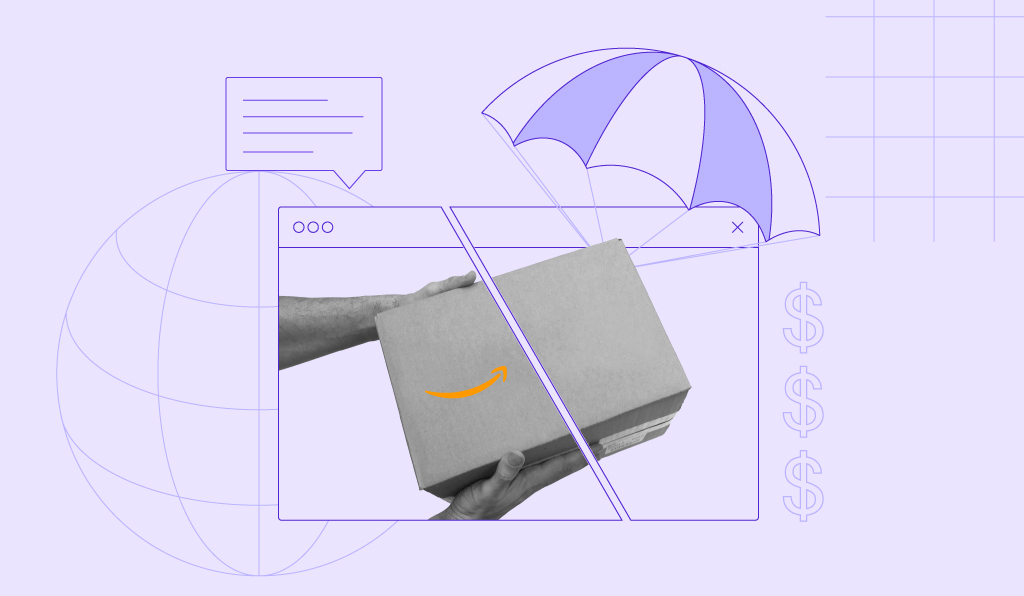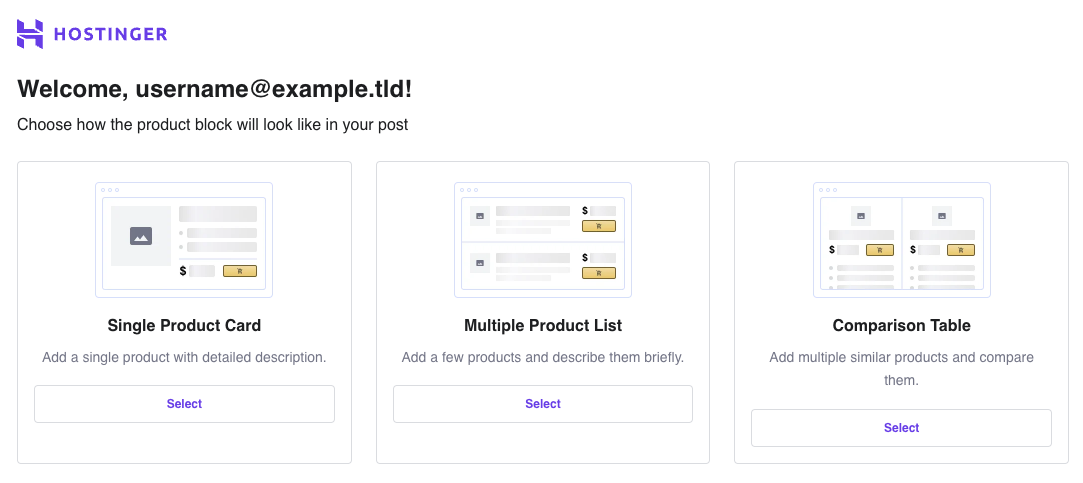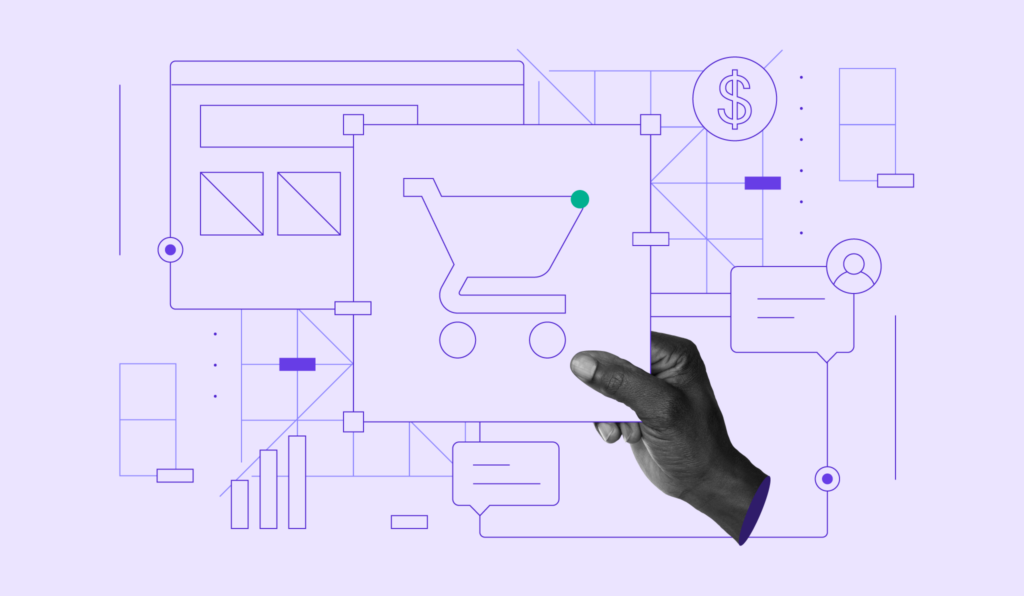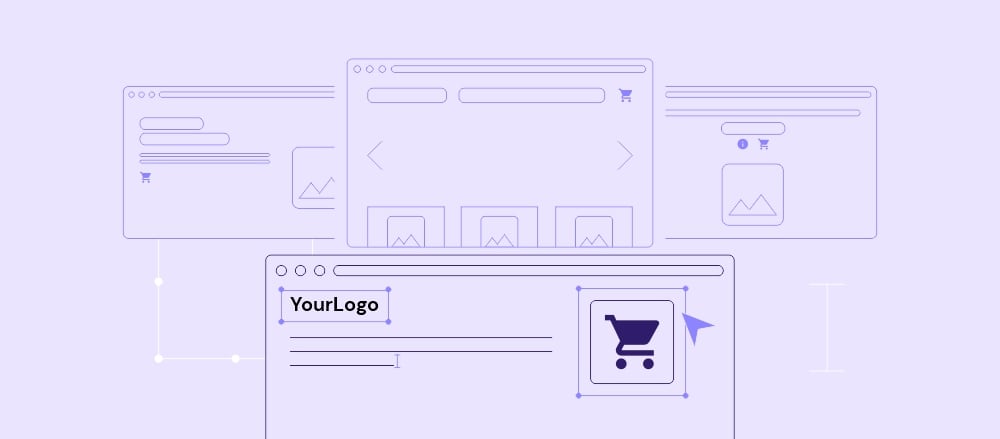How to make money on Amazon: 8 profitable ways

If you’re looking to make money online without the hassle of building traction from zero, Amazon is a great platform to begin with. As the top online retailer in the U.S., it already has a massive customer base waiting for you. The only thing left to do is figure out how to get started.
This article will explore the eight best ways to profit from Amazon, along with tips to maximize your earnings and avoid common pitfalls.
8 ways to earn money on Amazon
No budget for an upfront investment? No worries, some of these methods don’t need any!
Just pick the one that works for your budget and get started.
1. Sell your handcrafts
If you love making crafts, why not turn your hobby into a source of income with Amazon Handmade? This platform allows artisans like you to make money selling their unique, handmade items to a global audience.

Since Amazon Handmade is exclusive to selling products you create or alter yourself, you must apply to become an Amazon Handmade Artisan before setting up your shop.
To access Handmade features and benefits, you’ll need an existing Seller Central account and the Professional selling plan at $39.99/month. Once your application has been approved, Amazon waives the fee after the first month.
Although there are no listing fees, Amazon charges a 15% referral fee or a minimum of $1/sale.
Not sure what to make?
Check out our top picks for profitable items to make and sell online.
2. Dropship on Amazon
Don’t have the space or energy to handle inventory or shipping? Try dropshipping!
Here’s how it works: you list products in your Amazon store, and when a customer makes a purchase, you buy the item from a third-party supplier who ships it directly to them.
Since you rely on someone else to tackle most of the process, choosing a reliable dropshipping supplier is key to your success. Here are a few tips to help you find the right one:
- Choose a supplier with Amazon experience. Partnering with someone who knows how Amazon works will avoid common problems like delayed shipments or incorrect labeling.
- Check reviews and ratings. Look for suppliers with consistently high ratings and positive reviews from other sellers. It’s a good sign that they’re reliable and offer quality products.
- Ask for samples. Before committing, order samples to check the potential supplier’s product quality and shipping speed. You want to make sure their products meet your standards.
- Inspect their return policy. A credible supplier should have clear and fair return policies. Make sure their policy aligns with your needs to avoid any hassles with returns or refunds.
Just like selling handmade items, you’ll need an Amazon seller account to start your dropshipping business. The Individual plan has no monthly fee but deducts $0.99/item sold, while the Professional plan costs $39.99/month with no per-item fee.
Don’t forget the referral fees, which vary between 8-20% with a minimum of $0.30/sale depending on the product category.
3. Sell private label products through Amazon FBA
Private label, or white label, means creating your own branded version of a product that’s already made by a third-party manufacturer. Instead of designing something from scratch, you work with a supplier to produce the item and then add your own logo, packaging, and branding to make it stand out.
Once your products are ready, you send them to Amazon’s fulfillment centers for delivery using Fulfillment by Amazon (FBA). With FBA, Amazon handles the storage, packing, shipping, and even customer service, helping you build trust with buyers by leveraging Amazon’s reputation.

Compared to dropshipping, FBA gives you more control over product quality, branding, and packaging since you’re supplying and managing your own inventory. In dropshipping, you rely on suppliers for stock and shipping, which can sometimes lead to delays or stockouts.
Of course, having Amazon manage your entire fulfillment process costs extra. Here’s a breakdown of the key costs for using Amazon FBA:
- Amazon Seller Account fee. You can choose between the Individual plan ($0.99/item sold) or the Professional plan ($39.99/month).
- FBA fulfillment fees. Amazon charges a fee per item for picking, packing, and shipping based on the size and weight. For small and standard-sized products, fees range from $2.50-5, while larger or heavy items start at around $6.
- Referral fees. Amazon takes 8-20% per sale with a minimum of $0.30/sale depending on the product category.
- FBA storage fees. Storing your inventory in Amazon’s fulfillment centers costs $0.56-2.40/cubic foot, depending on your product’s size and the time of the year.
4. Join the Amazon Affiliate Program
Amazon Associates is perfect for content creators, bloggers, and influencers who want to monetize their platforms without selling products or making an upfront investment. With effective marketing campaigns, this Amazon side hustle can turn into a promising passive income stream.

Signing up for Amazon’s affiliate marketing program is completely free. Plus, you’ll have access to a wide range of products to promote based on your niche.
To become an Amazon affiliate, you must own at least one of the following platforms:
- Website. Your site must be publicly accessible and have at least 10 original blog posts published within the last 60 days.
- App. It needs to be freely available on Google Play, Apple, or Amazon app stores, contain original content, and must not resemble Amazon’s own shopping app.
- Social media. You’ll need an active, public account on platforms like Facebook, Instagram, X, YouTube, TikTok, or Twitch, with at least 500 followers.
Developing an app means you’ll need coding skills or have to hire someone, and building a social media following can take a lot of time and effort before you can join the affiliate program. So, if you’re just starting out, going the website route might be the easiest.
And Hostinger can make this process even easier.
First, grab our Business or Cloud Startup WordPress hosting plan starting at RM13.99/month. This gives you access to two of our handy in-house tools ‒ AI Website Builder for WordPress, Hostinger Amazon Affiliate Connector, and the AI Content Creator.
With the AI Website Builder for WordPress, you can instantly launch a website and populate it with affiliate links using the Hostinger Amazon Affiliate Connector plugin.
This plugin lets you easily add Amazon product listings to your blog posts as blocks. You can showcase them as single-product cards, a multi-product list, or a comparison table ‒ whichever works best for your audience and conversions.

Once you’ve been accepted into the Amazon Associates program, follow our guide to set up the Hostinger Amazon Affiliate Connector and connect your account to your new WordPress site.
Meanwhile, you can use AI Content Creator to help build a library of high-quality content quickly.

While WordPress is already SEO-friendly by default, implementing top WordPress SEO practices can increase your chances of ranking higher. Doing this while creating great content will help you build credibility and a following for your affiliate marketing success.
Make sure to follow Amazon’s guidelines for affiliate content and traffic standards and generate at least three qualifying sales within 180 days to keep your account active.

5. Become an Amazon Influencer
If you’ve already built a social media following, you can start making money by becoming an Amazon influencer.

As an extension of the Amazon Associates program, Amazon Influencers focuses more on social media promotion, letting you create a personalized Amazon storefront to showcase products that fit your brand. Share these recommendations with your followers and earn a commission whenever they buy something from your account.
The best part? It’s completely free to join!
The commission rate varies depending on the product category, with some categories offering up to 20%. Check Amazon’s standard commission income statement to see which products have the best profit potential.
To apply, you’ll need an active social media account on YouTube, Instagram, Facebook, or TikTok. While Amazon doesn’t specify an exact follower count, having a decent, engaged following will increase your chances of getting approved.
6. Sell your design on Amazon Merch on Demand
Got a knack for design? Turn your art into a brand and sell your own merchandise!

Amazon Merch on Demand is a print-on-demand service that allows artists to sell a wide range of products featuring their designs, such as t-shirts, hoodies, and mugs. Simply upload your artwork and choose the products you want to sell, and Amazon takes care of everything else ‒ from printing to shipping.
Like dropshipping and private labeling, this business model removes the hassle of inventory management and shipping. Plus, with Amazon’s massive customer base, your designs have a great chance of being discovered and purchased.
As the designer, you get to set the price for your branded products. Amazon pays you a royalty for each sale, based on the product’s price, any applicable taxes, and production costs. You can check the royalty calculation page to estimate your potential profits across different products and marketplaces.
For example, selling a standard t-shirt in the U.S. marketplace for $15.99-25.99 can earn you a royalty between $1.93-9.32.
You can use your regular Amazon account to sign up for the Merch on Demand program. Just like with Amazon Handmade, you must upload original designs and follow Amazon’s content policies.
7. Publish your eBooks on Kindle Direct Publishing (KDP)
Wordsmiths, here’s your shot at making money with Amazon. Instead of leaving your brainchild to collect dust on your hard drive, publish it on Amazon Kindle Direct Publishing (KDP) and make some passive income off of it.

Amazon KDP is a self-publishing platform where you can sell eBooks directly to readers through the Kindle store. It’s free to use, and you can publish as many books as you want while still retaining the rights to them. This program welcomes all types of content, from novels and children’s books to journals and poetry.
You control the price and can offer a paperback version using print-on-demand. Kindle authors also get Amazon’s promotional tools to help boost sales, such as Countdown Deals and eBook Pre-order.
Amazon gives you two royalty options for eBooks:
- 35%. You earn 35% of your book’s list price (minus VAT) and can sell in all regions.
- 70%. Earn 70% (minus VAT and delivery costs) in eligible countries, with delivery fees based on file size. However, you must price your book between $2.99-9.99 to qualify for this option.
For paperbacks, you get 60% of the list price minus printing costs, which vary depending on the book’s specs and marketplace. Use Amazon’s royalty calculator to estimate your earnings.
8. Buy and resell products
This business model involves buying products from third-party suppliers at a lower price and reselling them at a higher price for profit. Since you don’t need to worry about branding or creating your own products, it’s a great option for anyone looking to start quickly.
You have two ways to approach this ‒ retail arbitrage and wholesale.
With retail arbitrage, you buy discounted products from retail stores or clearance sales, making starting affordable since you only purchase in small batches. However, availability depends on what you find in stores, and it can be time-consuming to search for good deals.
Profits come from the difference between an item’s purchase and selling prices, so they’re usually smaller.
Wholesale, on the other hand, requires a larger upfront investment as you’ll buy products in bulk directly from manufacturers or distributors. The benefit? You get a steady stock of products without needing to search for new items daily, meaning a more stable income.
Most of your time goes into building relationships with suppliers, which helps secure reliable inventory over the long term.
When pricing your items, make sure to factor in Amazon’s referral, fulfillment (FBA), and storage fees. Many sellers recommend aiming for at least a $3 profit per item or a 50% return on investment (ROI) to stay profitable. This helps cover any unexpected costs and keeps your business running smoothly.
Tips to maximize your earnings on Amazon
Getting your Amazon business up and running is just the start. Follow our tips to grow its profitability over time using Amazon’s built-in tools and programs.
Register your brand
Building a brand helps you stand out from the crowd and build customer loyalty. It also gives your products a professional touch, making them more memorable and recognizable.
Registering your brand through the Amazon Brand Registry program gives you more control over how it appears on the platform and protects it from unauthorized sellers. For example, using the A+ Content tool, you can add more detailed descriptions, images, and videos to your product pages.

Besides giving you better control over your brand’s appearance on the platform, Amazon’s brand protection program also helps protect it from counterfeit sellers. It gives you more control over listings that use your brand name, preventing anyone from selling fake products using your brand without permission.
Last but not least, you can access Sponsored Brands advertising, which lets you run ads featuring your logo, customized headline, and multiple products to boost brand awareness and sales.
Here’s what you need to join Amazon Brand Registry:
- Active or pending trademark. The trademark must be registered or pending in the country you wish to sell in.
- Trademark type. Accepted trademarks can be text-based (word mark) or image-based (design mark with text elements).
- Matching brand name. The trademarked name must appear on your products or packaging.
- Seller or Vendor Central account. Sign up for one of these accounts to access the registry.
Check out Amazon’s Brand Registry eligibility page for more information.
Use Cost-Per-Click (CPC) advertising strategies

While SEO helps drive organic traffic over time, CPC ads give you the momentum to gain traction faster, especially for new brands and products. This marketing strategy boosts your brand and product listings’ visibility by targeting the right audience with relevant keywords.
Here’s how it works: you set a budget, bid for placements, and pay only when someone clicks on your ad.
Amazon offers three types of PPC ads:
- Sponsored Products. Promote individual listings in search results and product pages.
- Sponsored Brands. Showcase multiple products with your logo and a custom headline.
- Sponsored Display Ads. Retarget shoppers who have viewed your products or similar ones on and off Amazon.
Ad costs start as low as $0.20 per click for non-competitive keywords, $2 for medium competitive keywords, and $6 for competitive keywords. You can set budgets using schedule-based or performance-based rules to avoid overspending.
Check out the Amazon Ads page for more details.
Monitor pricing and adjust dynamically
Low prices always catch customers’ attention, so it’s important to tweak your product prices regularly to keep up with trends, demand, and competitors. Dynamic pricing makes sure your products stay attractive while maintaining profitability.
While there are third-party tools, Amazon Automate Pricing is easy to use since it’s built right into Seller Central. It adjusts prices 24/7 based on rules you set, like price limits and market changes.

Got a big inventory? No problem! Automate Pricing can handle multiple products automatically, saving you time and hassle. Plus, setting a minimum price guarantees you never sell at a loss.
The tool is free for Professional sellers with active stock-keeping units (SKUs) and requires a minimum price for each SKU to qualify.
Meet Featured Offer requirements
Commonly known as Amazon Buy Box, the Featured Offer appears on product pages with “Add to Cart” and “Buy Now” buttons. Multiple sellers can list the same product, but only one gets this prime spot at a time.

Since up to 82% of Amazon sales happen through the Featured Offer, winning it can give your sales and brand visibility a huge boost.
To compete, you’ll need a Professional seller account with good performance metrics, such as high feedback ratings, fast shipping times, and low defect rates. There also needs to be enough stock to fulfill orders quickly.
Amazon rotates the winner periodically based on its own algorithm, but here’s how you can increase your chances:
- Using Amazon FBA to meet the platform’s standards.
- Maintaining competitive pricing against other sellers.
- Improving seller performance with excellent customer service.
- Keeping inventory in stock to guarantee order fulfillment.
Conclusion
When it comes to making money online, Amazon offers something for everyone, whether you’re a crafter, reseller, writer, or influencer. With its huge customer base and built-in tools, you can dive right in without needing technical skills or a team to manage operations like procurement and shipping.
We explored many ways to start, from selling handmade goods and dropshipping to private labeling with Amazon FBA, publishing eBooks, and joining the Affiliate and Influencer programs. You also learned strategies like dynamic pricing and competing for the Featured Offer to grow your profits.
Which method caught your eye? Comment below!
How to make money on Amazon FAQ
How do I make money on Amazon without selling products?
You can make money on Amazon without selling products by joining programs like Amazon Associates or Amazon Influencer. These programs give you commissions by promoting Amazon products through affiliate links or a personalized storefront. If you’re a writer, you can publish eBooks on Kindle Direct Publishing (Amazon KDP) to generate passive income from royalties.
How do I start selling on Amazon?
To start selling on Amazon, you have to create a seller account (Individual or Professional) on Seller Central, list your products, and set their prices. If you can’t manage shipping yourself, Fulfillment by Amazon (FBA) can do it for extra costs.
Can I make money with Amazon Affiliates?
Yes, you can make money through Amazon’s affiliate marketing program by promoting products with affiliate links. All you need is a website, app, or social media account ‒ ideally with a following ‒ to create content that encourages purchases through your links.
Is it possible to make passive income on Amazon?
Absolutely! Affiliate marketing, publishing eBooks, and selling custom merchandise are great ways to earn passive income on Amazon. They don’t need constant effort, so you can focus on other priorities, like growing your main revenue streams. Check out our list of the best side hustle ideas for even more ideas, including those beyond Amazon.



